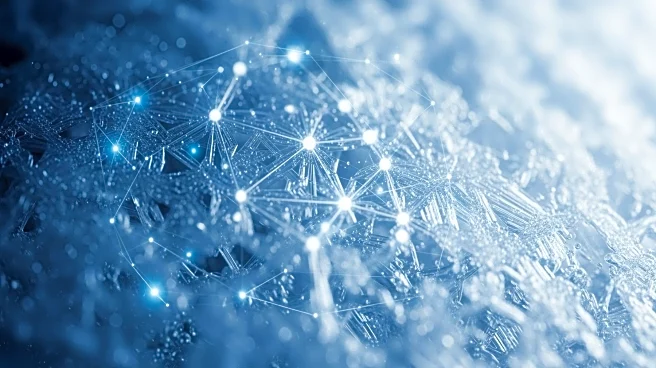What's Happening?
Researchers at the University of Chicago and the Abdus Salam International Center for Theoretical Physics have used quantum mechanical simulations to uncover how imperfections in ice's crystal structure
affect its interaction with ultraviolet light. This study, published in the Proceedings of the National Academy of Sciences, provides insights into the sub-atomic processes occurring when ice melts, which could improve predictions of greenhouse gas release from thawing permafrost. The research addresses a decades-old puzzle regarding the changing absorption of light by ice exposed to UV radiation.
Why It's Important?
Understanding the chemistry of ice at a molecular level is crucial for predicting environmental changes, particularly in polar regions where permafrost traps greenhouse gases. As global temperatures rise, the release of these gases becomes a critical factor in climate change models. The findings also have implications for astrochemistry, as they may help explain chemical processes on icy moons like Europa and Enceladus. This research could lead to better predictions of climate change impacts and inform strategies for mitigating environmental challenges.
What's Next?
The research team plans to collaborate with experimentalists to validate their computational predictions and extend their studies to more complex ice structures. They aim to explore the impact of melted water on ice surfaces and the interactions of UV light with ice containing multiple defects. These efforts could further enhance understanding of ice photochemistry and its environmental implications, potentially influencing climate policy and scientific exploration of icy celestial bodies.













